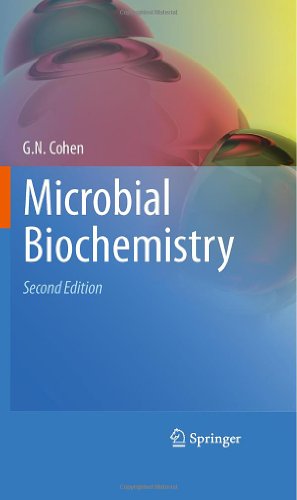بیوشیمی میکروبی ۲۰۱۱
Microbial Biochemistry 2011
دانلود کتاب بیوشیمی میکروبی ۲۰۱۱ (Microbial Biochemistry 2011) با لینک مستقیم و فرمت pdf (پی دی اف)
| نویسنده |
G.N. Cohen |
|---|
| تعداد صفحهها |
558 |
|---|---|
| نوع فایل |
|
| حجم |
6 Mb |
| سال انتشار |
2011 |
89,000 تومان
معرفی کتاب بیوشیمی میکروبی ۲۰۱۱
فیزیولوژی میکروبی، بیوشیمی و ژنتیک اجازه فرمول بندی مفاهیمی را داد که معلوم شد در مطالعه موجودات بالاتر مهم هستند. در بخش اول، اصول رشد باکتری ارائه شده، علاوه بر توصیف لایه های مختلف که سیتوپلاسم باکتری را احاطه کرده اند، و نقش آنها در به دست آوردن مواد مغذی از محیط های خارجی از طریق مکانیسم نفوذپذیری متفاوت به تفصیل شرح داده شده است. فصلی به ترس اختصاص داده شده است و برای درک بسیاری از مکانیسم های تنظیمی که در سراسر کتاب توضیح داده شده است ضروری است. بخش دیگری مکانیسم هایی را که توسط آن سلول ها انرژی برای رشد، گلیکولیز، مسیر پنتوز فسفات، تری کربوکسیلاسیون و چرخه های چسب به دست می آورند، تجزیه و تحلیل می کند. دو فصل به کلاس هایی از میکروارگانیسم هایی که به ندرت در کتاب های درسی پوشش داده می شوند، به عنوان Archaea، به ویژه باکتری های متانوژن، و Methylotrophs اختصاص دارد. هشت فصل به تشریح اصول مقررات در سطح رونویسی با آگاهی لازم از مکانیسم های رونویسی و ترجمه می پردازد. پانزده فصل زیر بیوسنتز بلوک های ساختمان سلولی، اسیدهای آمینه، نوکلئوتیدهای پورین و پیریمیدین، دئوکسی نوکلئوتیدها، ویتامین ها و کوآنزیم های محلول در آب، مشتقات ایزوپرن و تتراپیرول و ویتامین B12 را پوشش می دهد. دو فصل آخر به مطالعه برهمکنش های پروتئین-DNA و تکامل مسیرهای بیوسنتزی اختصاص یافته است. پیشرفت های قابل توجه در 30 سال گذشته در این زمینه با معرفی شبیه سازی و توالی یابی ژن و توسعه نمایی روش های فیزیکی مانند کریستالوگرافی اشعه ایکس یا تشدید مغناطیسی هسته ای به ارائه متابولیسم تحت یک زاویه چند رشته ای جذاب کمک کرده است. سطح خوانندگان مقداری دانش از شیمی و ژنتیک را در سطح کارشناسی فرض می کند. گروه هدف دانشجویان تحصیلات تکمیلی و پژوهشگران دانشگاهی و صنعتی هستند.



